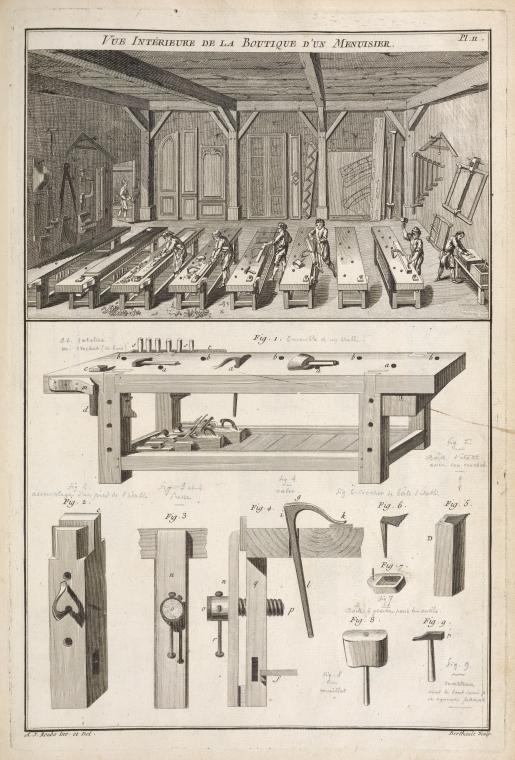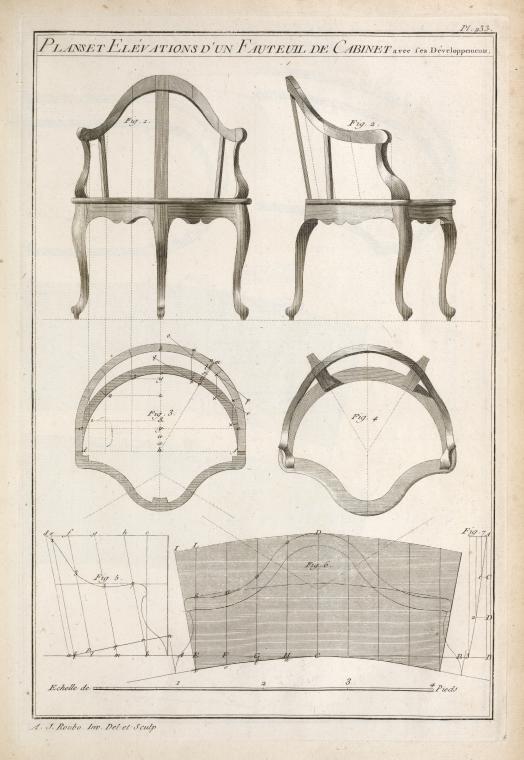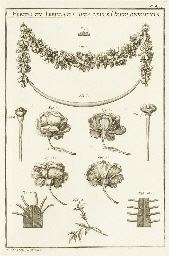Andre Jacob Roubo (1739-1791) was an accomplished woodworker and author of the multi-volume book L’Art du Menuisier, or, The Art of the Joiner. This masterful publication, produced between 1769 and 1774, featured a comprehensive overview of techniques for all manner of wood carving, such as interior paneling, furniture, carriages and garden trellises. The book also included lists of tools and procedures for carpentry. Roubo engraved the 389 plates, which combine practical information with images of exquisite beauty. His treatise was a product of the Age of Enlightenment and the intellectual emphasis on codifying and documenting all forms of human knowledge. France became the unrivaled center of European luxury trades during the 17th and 18th centuries, a period when the French may lay claim to perfecting the art of the harmonious interior. Woodwork, furniture, fabrics and light fixtures were conceived as part of a unified environment all dedicated to supporting that most French of all things, “l’art du vivre,” or the art of living. Roubo’s book served as a critical aid in the creation of interiors both pleasing to the eye while meeting every functional need. Beauty and utility made for happy partners in an age renowned for the high quality of its design and craftsmanship.
The following images are excerpts from L’Art du Menuisier and illustrate the combination of beauty and function.

INTERIOR VIEW OF A STUDIO, A ROUBO WORK BENCH AND ASSOCIATED EQUIPMENT. IMAGE: COURTESY OF WIKIPEDIA



